Dwarf crayfish of the genus Cambarellus in the aquarium
Dwarf crayfish in the aquarium
The diurnal dwarf crayfishes of the genus Cambarellus come from the south of the USA and from Central America. Mostly they live in the dense aquatic vegetation of the shore zones, but also in collections of foliage on the bottom of the water. They like a pH between 7 and 8,5. In most waters the temperatures vary between 15 and 25 °C. Therefore, you can keep the crayfish well at room temperature. Dwarf crayfish do not spare plants and do not dig, so they can be kept very well in planted aquariums. Under good conditions, most species can live over two years.
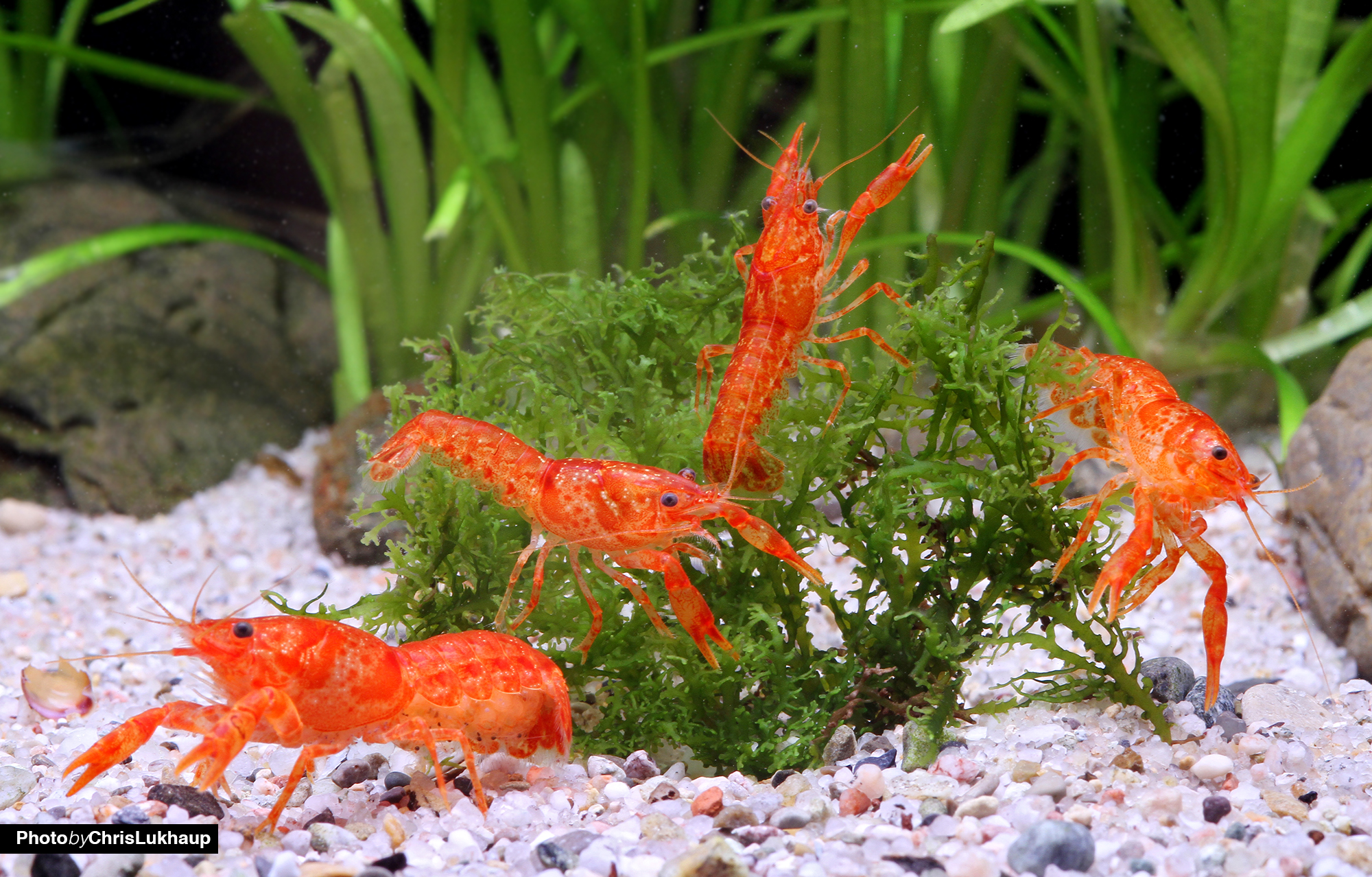
Orange dwarf crayfish can be kept in groups, but the dwarf crayfish aquarium should be well structured. Thanks to their small size, crayfish of the genus Cambarellus can be kept in crayfish aquariums as small as 10 l.
Appearance and sex differences of dwarf crabs
Many dwarf crayfish species are brown and often patterned. Cambarellus patzcuarensis has a bright orange color variation that is very popular in the hobby. In the species of the genus Cambarellus the claws of the females are somewhat shorter and thicker, the physique of the males is more slender. However, the sexes can be distinguished from below with certainty. In sexually mature males you can clearly see the Y-shaped sexual appendages at the transition of the head-chest-armor and abdomen. You can see these so called gonopods very well if you put the animals into a transparent container and look into it from below.
Reproduction & breeding of the dwarf crabs
During mating, the male clutches the female with his claws and legs and turns her onto her back or side. Mating takes about 15 minutes. Females bear between 20 and 50 young up to four times. The number depends not only on the species, but also on the age of the female.
The eggs and later the newly hatched crustaceans are carried under the pleon (abdomen). Fertilized eggs are dark brown, unfertilized eggs are orange. These are usually sorted out by the female so that the clutch does not become fungal. Supporting alder cones and brown autumn leaves can be added to the water.
Pregnant females eat practically nothing. They are very sensitive to stress. If you want to bring through as many young crayfish as possible, you should not transfer a pregnant female, but rather the rest of the stock (and after releasing also the mother, all adult crayfish of the genus Cambarellus eat other and own offspring). Unfortunately, the little ones are also strongly cannibalistic among themselves, so many hiding places in the rearing tank are mandatory. A thick layer of brown autumn leaves, sintered glass or clay rolls, a brick or similar - or a combination of these - are all good.
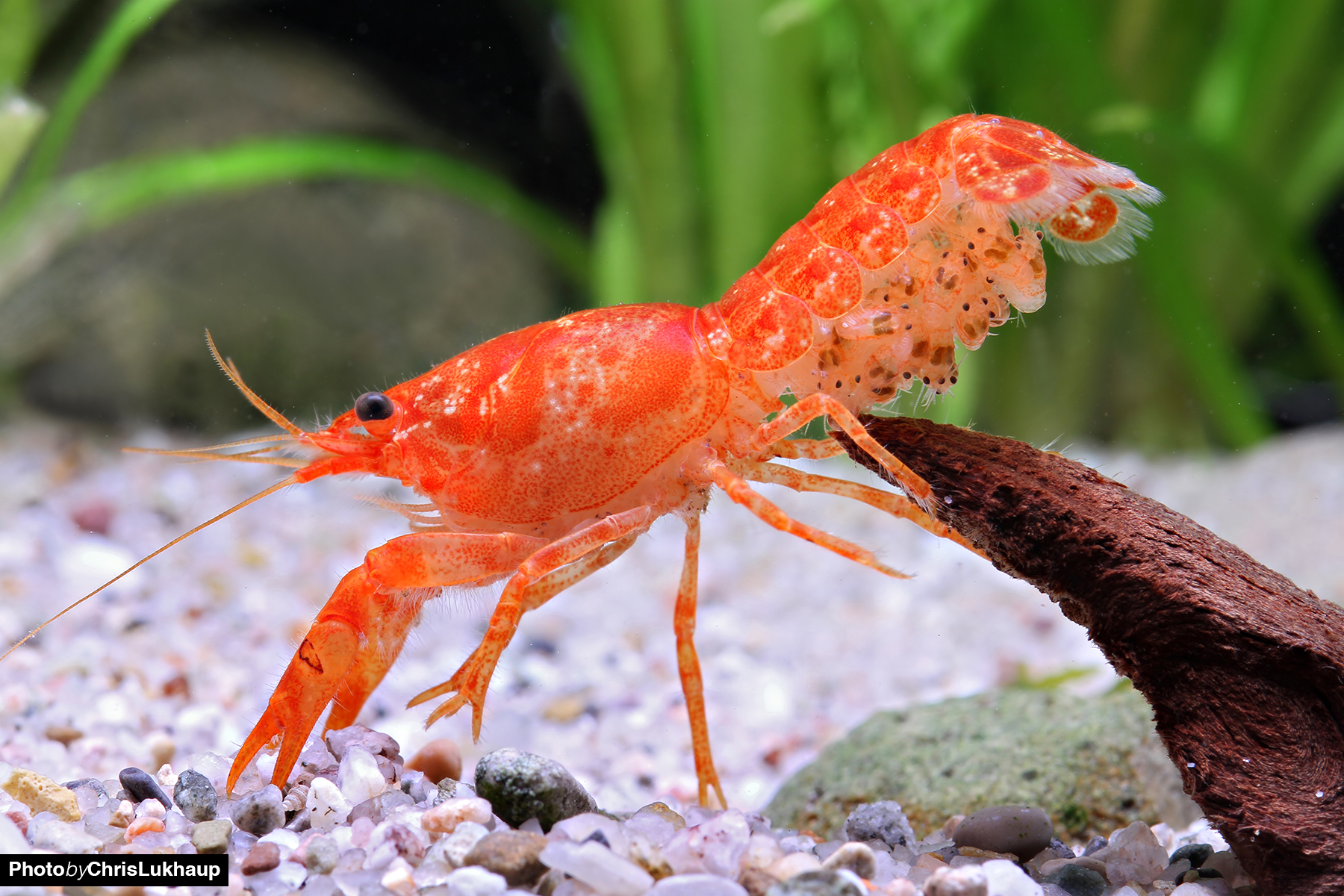
An Orange Dwarf Crayfish lady with eggs, depending on the temperature the dwarf crayfish females carry the eggs for 4 - 6 weeks. The be-all and end-all in rearing is to offer the small dwarf crayfish plenty of hiding places.
Dwarf crayfish socialization
There are peaceful to relatively territorial species. For example, the Cambarellus diminutus is a very peaceful member of the genus, while the CPO can be somewhat more aggressive. Even within species there are peaceful to relatively aggressive specimens - crayfish are character animals.
Basically, the crayfish aquarium should also be very well structured in height and have at least one more hiding place than crayfish. The keeping of dwarf crayfish is possible in tanks from 10 l but it is recommended to use tanks from 40 to 50 l, the size of the base area is much more important than the aquarium height, because the animals hardly swim.
Dwarf crayfish can be well socialized with armored catfish and sucking catfish, small characins, danios or livebearers, provided the aquarium dimensions fit their needs. Snails are eaten, and most dwarf crayfish, with the exception of Cambarellus diminutus, are not very gentle with dwarf and fan shrimp. In turn, crayfish are attacked and eaten by large-armed shrimp.
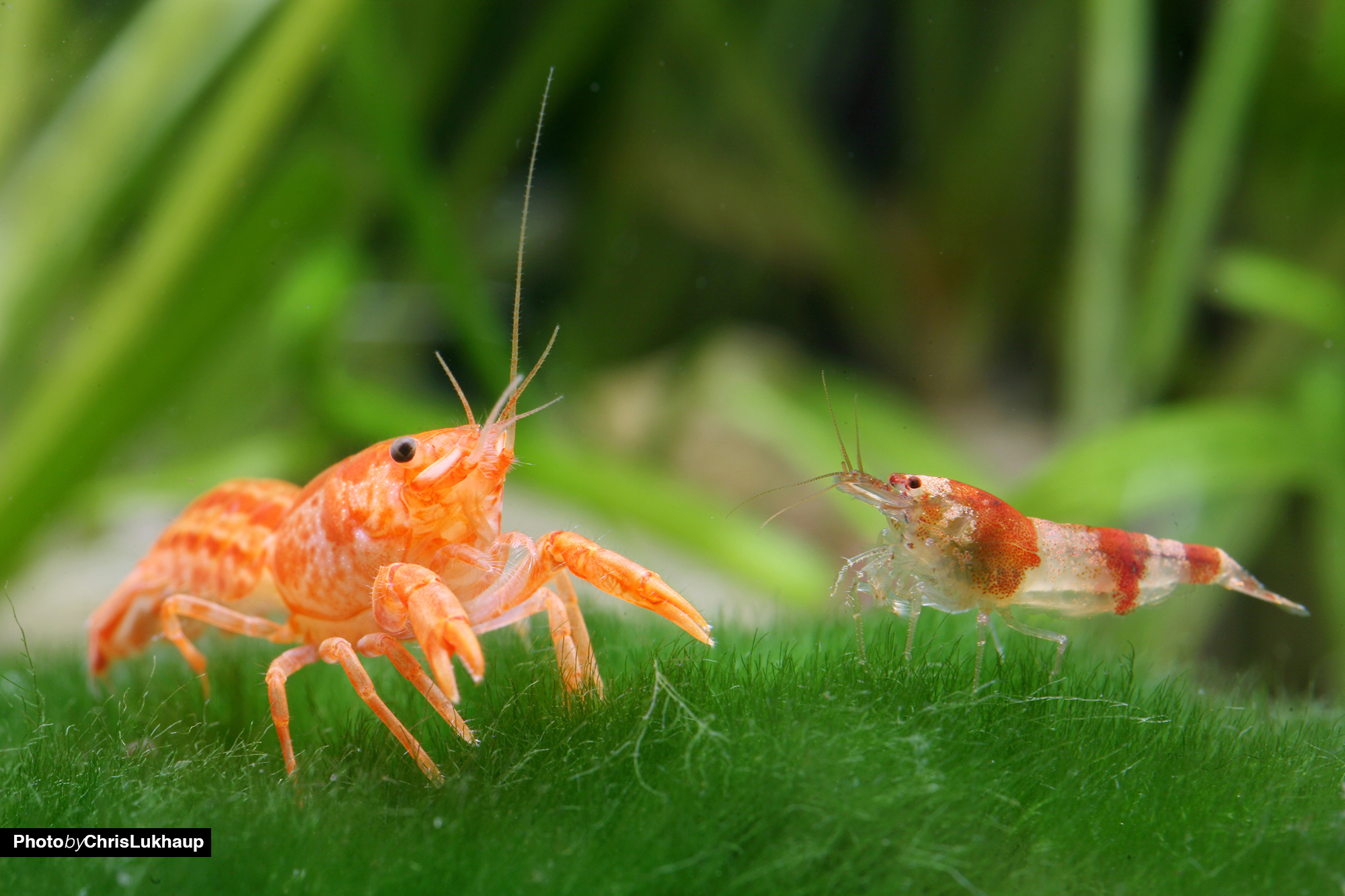
The keeping of dwarf crayfish and dwarf shrimp is controversial, with dwarf shrimp most dwarf crayfish, with the exception of Cambarellus diminutus, do not exactly handle carefully.
Feeding dwarf crayfish
Dwarf crayfish are very fond of decaying autumn leaves, nettles, fish food, special crayfish food, frozen food and Artemia. Protein is an important part of their diet. They meet their fiber requirements by nibbling on bog pine roots or similar.
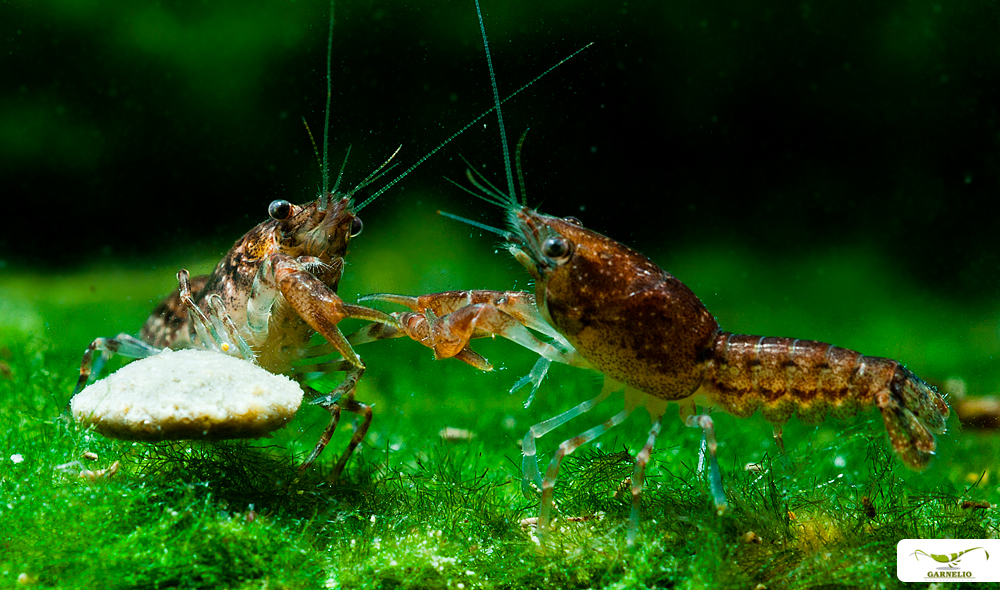
Dwarf crayfish / Cambarellus puer squabble over a crayfish food stick ! The feeding of dwarf crayfish is extremely worth seeing due to all the little scrambles !

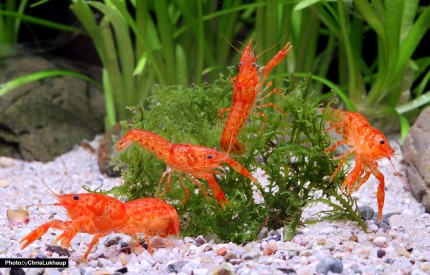
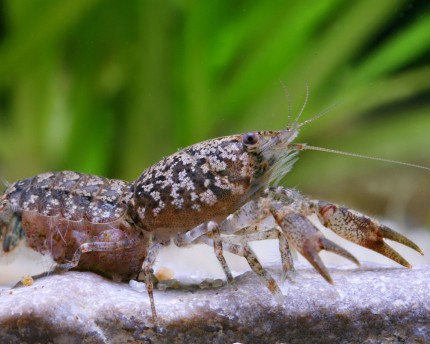
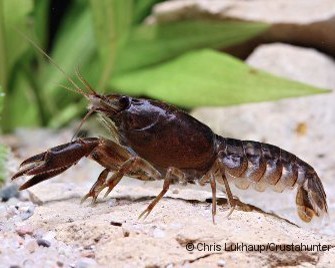
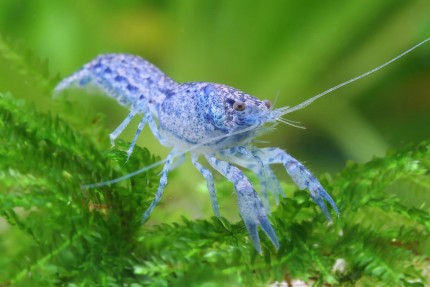
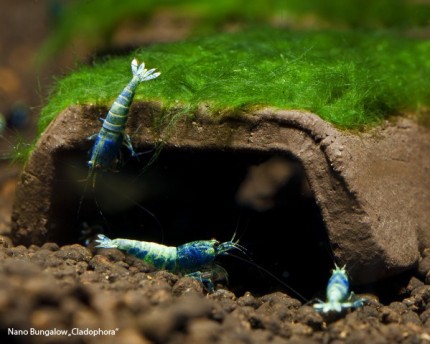
Erste Paarung
Vielen Dank für euren Blog! Ich durfte gerade der ersten Cambarellus Schmitti-Paarung meines Lebens beiwohnen und werde nun, dank eurer Tips, alles dafür tun, dass es der werdenden Mutti und dem Nachwuchs gut geht. Drückt mir die Daumen, dass sich viele Krebslein wohl fühlen, wachsen und gedeihen werden!
Nachwuchs
Ich habe vor kurzem ein Pärchen cambarellus diminutus bei euch gekauft. Das Weibchen trägt jetzt schon ca 20 befruchtete Eier und ein paar unbefruchtete.
Im Kampf ums Futter leistet sie rabiat Widerstand und lässt sich von ihrem Partner nicht verdrängen . :D
Freue mich schon auf den Nachwuchs.